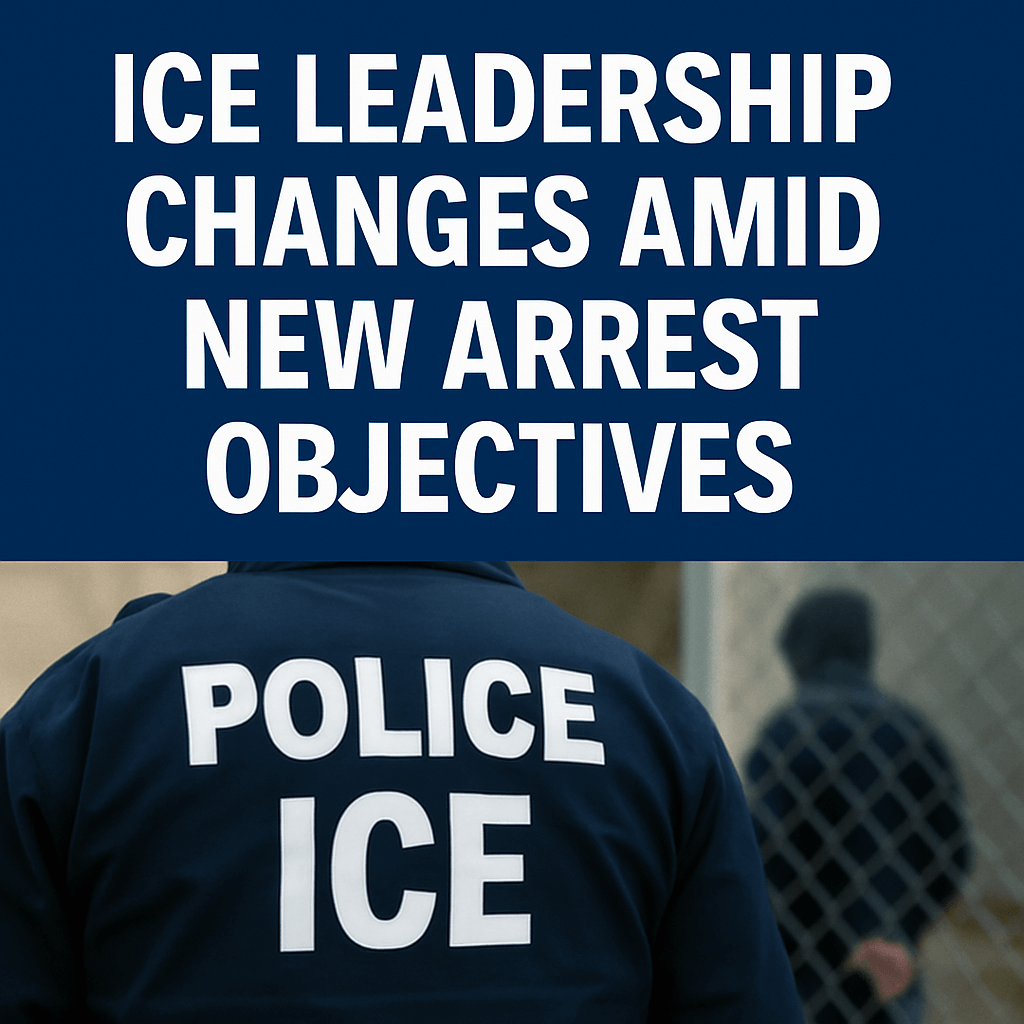ICE Leadership Changes Amid New Arrest Objectives

WASHINGTON (AP) — The agency responsible for implementing President Donald Trump’s aggressive mass deportation strategy, known as Immigration and Customs Enforcement (ICE), is undergoing a significant leadership restructuring. The changes come at a time when the White House is setting a formidable target of achieving 3,000 arrests per day, marking a stark increase from current operational levels.
Leadership Changes Within ICE
In a news release issued on Thursday, ICE announced a series of leadership shifts aimed at enhancing the agency’s effectiveness in detaining and deporting individuals without the legal right to remain in the United States. Notably, Kenneth Genalo, who served as the acting director of Enforcement and Removal Operations (ERO), is set to retire and will transition to the role of a special government employee within ICE.
Robert Hammer, previously the acting head of Homeland Security Investigations (HSI), will also be shifting to a new leadership position at ICE headquarters. The agency has appointed Marcos Charles as the new acting head of ERO, while Derek Gordon will take over as the acting head of HSI. Additionally, ICE has announced several other staff realignments across various departments, reflecting a comprehensive approach to leadership renewal within the agency.
3,000 Daily Arrests: An Unprecedented Target
The strategic changes come on the heels of remarks made by White House deputy chief of staff Stephen Miller on Fox News, where he disclosed that the Trump administration is setting an ambitious goal of 3,000 arrests per day by ICE. Miller stated, “President Trump is going to keep pushing to get that number up higher each and every single day.” Achieving such a target would represent a dramatic escalation in operational tempo, especially compared to the numbers from January 20 to May 19, when ICE averaged just 656 arrests per day, totaling 78,155 arrests in that period.
Operational Constraints
Realizing this ambitious goal presents numerous logistical challenges. ICE currently operates with a finite number of enforcement and removal officers, whose ranks have remained relatively stagnant. The operational effectiveness of these officers in tracking down, arresting, and removing undocumented individuals is critical to the agency’s mission.
- Detention Capacity: The number of available detention beds poses a significant bottleneck. ICE facilities often operate beyond capacity, complicating the process of detaining those arrested.
- Transportation Logistics: The agency’s limited fleet of aircraft for deportations could hinder the timely removal of individuals from the country post-arrest, further complicating efforts to meet daily benchmarks.
- Fiscal Resources: With budget allocations and funding subject to congressional approval, ICE’s ability to expand its operations hinges greatly on securing a major funding boost.
Funding Initiatives and Potential Impacts
To support the administration’s ambitious deportation strategy, a significant funding package is under consideration in Congress, aimed at bolstering immigration enforcement capabilities. This proposed plan seeks to:
- Facilitate the removal of 1 million immigrants annually.
- Enable the housing of 100,000 individuals in detention centers.
- Augment the workforce by recruiting 10,000 additional ICE officers and investigators.
Such an infusion of resources could potentially transform the operational capacity of ICE, allowing for a more rapid and extensive immigration enforcement strategy. However, the practical ramifications of this proposed funding remain to be seen, contingent upon legislative support and implementation strategies.
Previous Agency Restructuring and Effectiveness
This latest leadership shakeup is not an isolated event; rather, it follows a series of organizational changes within ICE since the beginning of the Trump administration. Earlier this year, an acting director and two other top officials were reassigned, further emphasizing the administration’s commitment to recalibrating the agency’s leadership to align with its immigration enforcement objectives. Whether these changes will yield the desired operational improvements remains a focal point of scrutiny among policymakers and advocates alike.
Conclusion
As ICE prepares to undertake leadership changes amid ambitious arrest targets, the balance between enforcement capabilities, logistical feasibility, and community impact remains a critical intersection. Experts and stakeholders will be closely monitoring how these changes manifest in daily operations and the broader implications for U.S. immigration policy moving forward.
About the Authors: Rebecca Santana, The Associated Press
Source: fortune